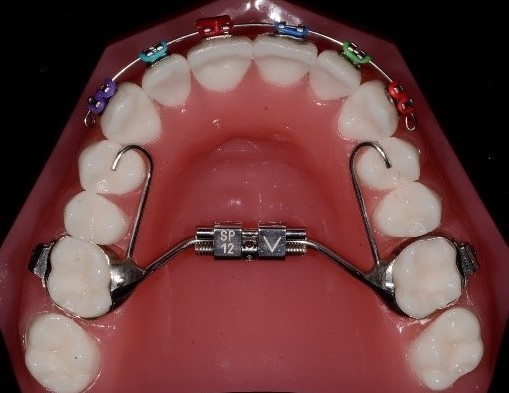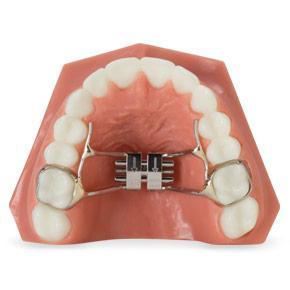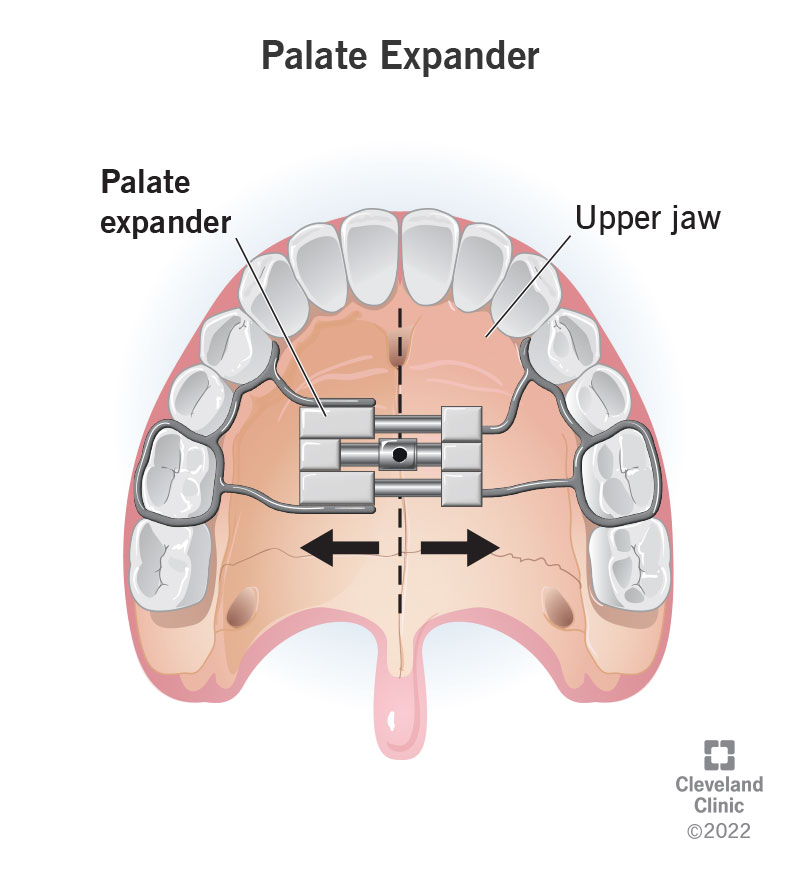Having a beautiful smile is something that everyone desires. However, not everyone is born with perfectly aligned teeth. Fortunately, there are dental solutions available to correct these issues and improve the appearance of your smile. One such solution is the use of expanders for teeth.
The benefits of using expanders for teeth are numerous. Firstly, they can help improve the alignment of your teeth, resulting in a more attractive smile. They can also correct bite issues, such as crossbites and underbites, which can lead to problems with chewing and speaking. Additionally, expanders can create more space in the mouth, allowing crowded teeth to move into their correct positions and reducing the need for tooth extraction.
What are expanders for teeth?
Expanders for teeth are typically made of metal or plastic and are custom-made to fit the patient’s mouth. They consist of two halves that are connected in the middle by a screw or a hinge mechanism. The expander is attached to the upper molars and is gradually adjusted over time to apply gentle pressure on the palate, gradually widening it.
| Type | Description |
|---|---|
| Traditional palatal expander | This type of expander has a screw in the middle that can be turned to widen the device. |
| Removable expander | This type of expander can be taken out of the mouth for cleaning or eating. |
| Hybrid expander | This type of expander combines the features of both traditional and removable expanders. |
Expanders for teeth are commonly used in children and teenagers whose jaws are still growing. They can also be used in adults, although the treatment may take longer and be less effective. The duration of treatment with expanders for teeth can vary depending on the individual case, but it typically lasts for several months.
Types of expanders for teeth
Expanders for teeth are orthodontic devices that are used to widen the upper jaw or the lower jaw to create more space for crowded teeth or to correct a bite. There are several types of expanders that are commonly used in orthodontic treatment. These include:
1. Rapid Palatal Expander (RPE)

The Rapid Palatal Expander is a commonly used expander for widening the upper jaw. It consists of a metal framework that is attached to the upper molars. The expander is activated by turning a screw in the center of the device, which gradually widens the upper jaw over a period of time.
2. Haas Expander

The Haas Expander is another type of expander that is used to widen the upper jaw. It is similar to the Rapid Palatal Expander, but it is activated by turning a key that is located on the sides of the device. The Haas Expander is often used in cases where a larger amount of expansion is needed.
3. Quad Helix Expander

The Quad Helix Expander is a type of expander that is used to widen the upper jaw. It consists of a metal framework that is attached to the upper molars and has four helix-shaped wires that extend into the roof of the mouth. The Quad Helix Expander is often used in cases where a more gradual and controlled expansion is needed.
4. Removable Expander
A removable expander is a type of expander that can be taken out of the mouth. It is often used in cases where a smaller amount of expansion is needed or when the patient prefers a removable option. Removable expanders are typically worn for a certain number of hours each day or overnight.
Each type of expander has its own advantages and disadvantages, and the choice of expander depends on the specific needs and preferences of the patient. An orthodontist will determine the most suitable type of expander based on a thorough examination and evaluation of the patient’s teeth and jaw.
Uses of expanders for teeth
Expanders for teeth are orthodontic devices that are used to widen the upper jaw and create more space for crowded teeth. They are commonly used in children and teenagers who have narrow jaws or a crossbite.
One of the main uses of expanders for teeth is to correct a crossbite. A crossbite occurs when the upper teeth bite inside the lower teeth instead of outside. This can lead to problems with the bite, jaw alignment, and overall oral health. By using an expander, the upper jaw can be widened, allowing the upper teeth to fit properly over the lower teeth.
Expanders for teeth are also used to create space for crowded teeth. When there is not enough space in the jaw for all the teeth to fit properly, they can become crowded or misaligned. This can cause issues with tooth eruption, bite problems, and difficulty with oral hygiene. By using an expander, the jaw can be expanded, creating more space for the teeth to align properly.
In addition to correcting crossbites and creating space for crowded teeth, expanders can also be used to correct other orthodontic issues such as narrow arches, impacted teeth, and breathing problems. For example, expanders can help widen a narrow arch and create a more aesthetically pleasing smile. They can also help guide impacted teeth into their proper position and improve breathing by expanding the airway.
Benefits of expanders for teeth
Expanders for teeth offer several benefits for individuals who require orthodontic treatment. Here are some of the key advantages:
- Correcting overcrowding: Expanders can help create more space in the mouth by widening the dental arch. This is particularly beneficial for individuals with crowded teeth, as it allows the teeth to align properly and reduces the need for tooth extraction.
- Improving bite alignment: Expanders can also help correct bite issues, such as crossbites or underbites. By widening the upper jaw, expanders can help align the upper and lower teeth, improving the overall bite and preventing future dental problems.
- Enhancing facial symmetry: Expanders can contribute to improved facial symmetry by aligning the upper jaw with the lower jaw. This can have a positive impact on the overall appearance of the face.
- Facilitating other orthodontic treatments: Expanders are often used as a preliminary treatment to create the necessary space for other orthodontic procedures, such as braces or aligners. By using an expander, orthodontists can achieve better results and more efficient treatment.
- Improving breathing and speech: In some cases, expanders can help improve breathing and speech by expanding the airway and creating more room for the tongue and other oral structures.
- Preventing future dental issues: By addressing overcrowding and bite problems early on, expanders can help prevent future dental issues, such as tooth decay, gum disease, and temporomandibular joint (TMJ) disorders.
Overall, expanders for teeth offer numerous benefits for individuals seeking orthodontic treatment. They can help correct dental and skeletal issues, improve facial symmetry, and prevent future dental problems. If you are considering orthodontic treatment, consult with an orthodontist to determine if expanders are a suitable option for you.
How do expanders for teeth work?

Expanders consist of a metal framework with a screw mechanism in the middle. The device is custom-made to fit the patient’s mouth and is attached to the upper molars using bands or cemented brackets. The screw can be turned using a special key, which adjusts the tension and allows for controlled expansion.
When the screw is turned, the two halves of the expander start to move apart, pushing against the bones of the upper jaw. This stimulates the growth of new bone tissue and causes the upper jaw to widen. The expansion process is usually gradual and can take several months to achieve the desired results.
Expanders for teeth are typically used in children and teenagers whose jaws are still growing. By widening the upper jaw, they create more space for crowded or misaligned teeth, allowing them to come in properly aligned. This can help improve the bite, reduce the need for tooth extraction, and create a more harmonious facial appearance.
When are expanders for teeth recommended?
Expanders for teeth are recommended in cases where there is a need to widen the upper jaw or correct a narrow palate. This is often done in children and teenagers whose jaws are still growing and developing. The use of expanders can help create more space in the mouth, allowing for proper alignment and positioning of the teeth.
Expanders for teeth may be recommended by orthodontists in the following situations:
| Condition | Explanation |
|---|---|
| Crossbite | When the upper teeth are positioned inside the lower teeth when biting down. |
| Crowding | When there is not enough space in the mouth for all the teeth to properly align. |
| Impacted Teeth | When teeth are unable to erupt properly due to lack of space. |
| Speech Problems | When a narrow palate affects speech and pronunciation. |
| Breathing Difficulties | When a narrow palate obstructs the airway and causes breathing problems. |
In some cases, expanders for teeth may also be recommended as part of a comprehensive orthodontic treatment plan to prepare the mouth for braces or other corrective measures.
Are expanders for teeth painful?

One common concern that many people have when considering getting expanders for their teeth is whether or not the process will be painful. It’s natural to be apprehensive about any dental procedure, but rest assured that the discomfort associated with expanders for teeth is typically minimal and temporary.
It’s also worth mentioning that the long-term benefits of expanders for teeth often outweigh any temporary discomfort. Expanders can help create more space in the mouth, correct bite issues, and improve overall dental health. By addressing these concerns early on, it can prevent the need for more invasive and potentially more painful procedures in the future.
If you have concerns about the potential pain associated with expanders for teeth, it’s best to consult with your dentist or orthodontist. They can provide personalized information based on your specific situation and address any questions or concerns you may have.
How long do you need to wear expanders for teeth?
The duration of wearing expanders for teeth varies depending on the specific case and the individual’s dental needs. In general, expanders are typically worn for a period of several months to a year. However, the exact length of time can be determined by the orthodontist after a thorough examination and assessment of the patient’s teeth and jaw structure.
During the time that the expander is worn, regular appointments with the orthodontist will be necessary. These appointments allow for adjustments to be made to the expander as needed and for the orthodontist to assess the progress of the treatment. It is crucial to attend these appointments and follow the orthodontist’s instructions to ensure the expander is working effectively and to achieve the desired outcome in the shortest possible time.
| Key Points: |
|---|
| – The duration of wearing expanders for teeth varies depending on the individual’s dental needs. |
| – Expanders are typically worn for several months to a year. |
| – The orthodontist will create a treatment plan that includes the estimated duration of wearing the expander. |
| – Regular appointments with the orthodontist are necessary to monitor progress and make any necessary adjustments. |
How to care for expanders for teeth?
Proper care and maintenance of expanders for teeth are crucial to ensure their effectiveness and longevity. Here are some essential tips to follow:
1. Oral hygiene:
2. Avoid sticky and hard foods:
Avoid consuming sticky and hard foods that can damage or dislodge the expander. These include chewing gum, caramel, hard candies, ice, and nuts. Opt for softer foods that are easier to chew to prevent any unnecessary stress on the expander.
3. Regular adjustments:
Follow your orthodontist’s instructions regarding the frequency of adjustments for your expander. Regular adjustments are necessary to gradually widen the expander and achieve the desired results. Attend all scheduled appointments to ensure proper monitoring and adjustment of the expander.
4. Avoid excessive pressure:
Avoid putting excessive pressure on the expander, such as biting down on hard objects or using your tongue to push against it. Excessive pressure can lead to discomfort, damage, or even breakage of the expander.
5. Report any issues:
By following these care tips, you can maintain the effectiveness and longevity of your expanders for teeth. Remember to consult your orthodontist for personalized advice and guidance on caring for your specific expander.

Dr. Fidel Cann: Esteemed orthodontist with a lifelong dedication to enhancing smiles and oral health. Pioneering expertise, compassionate care.






